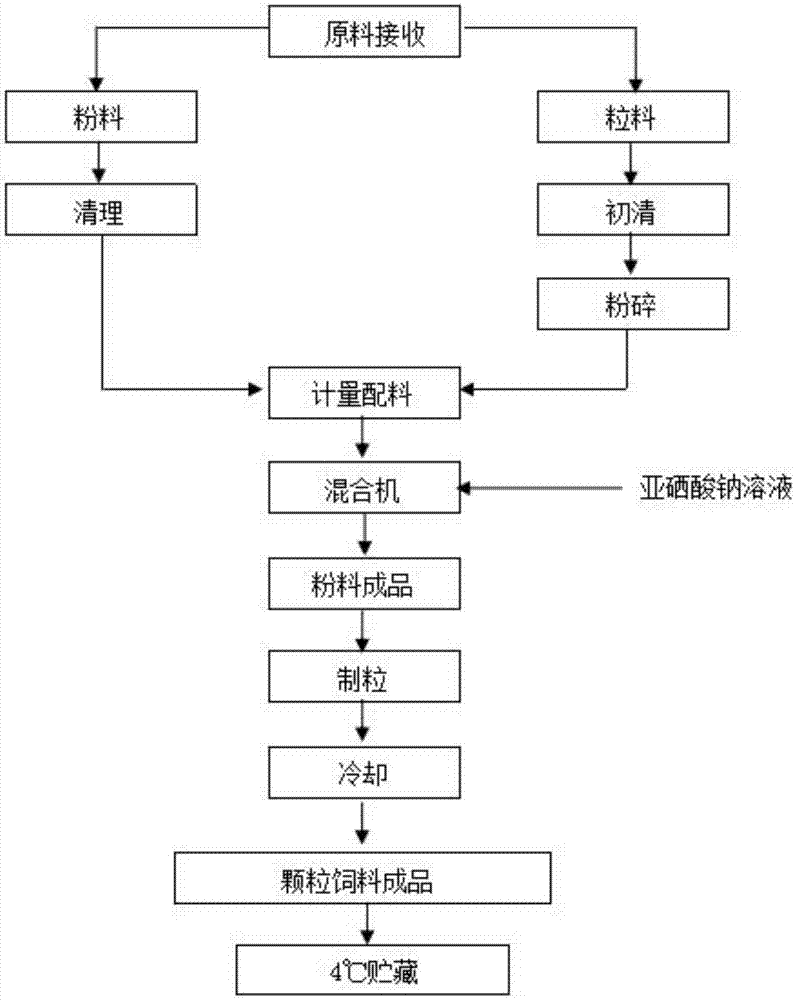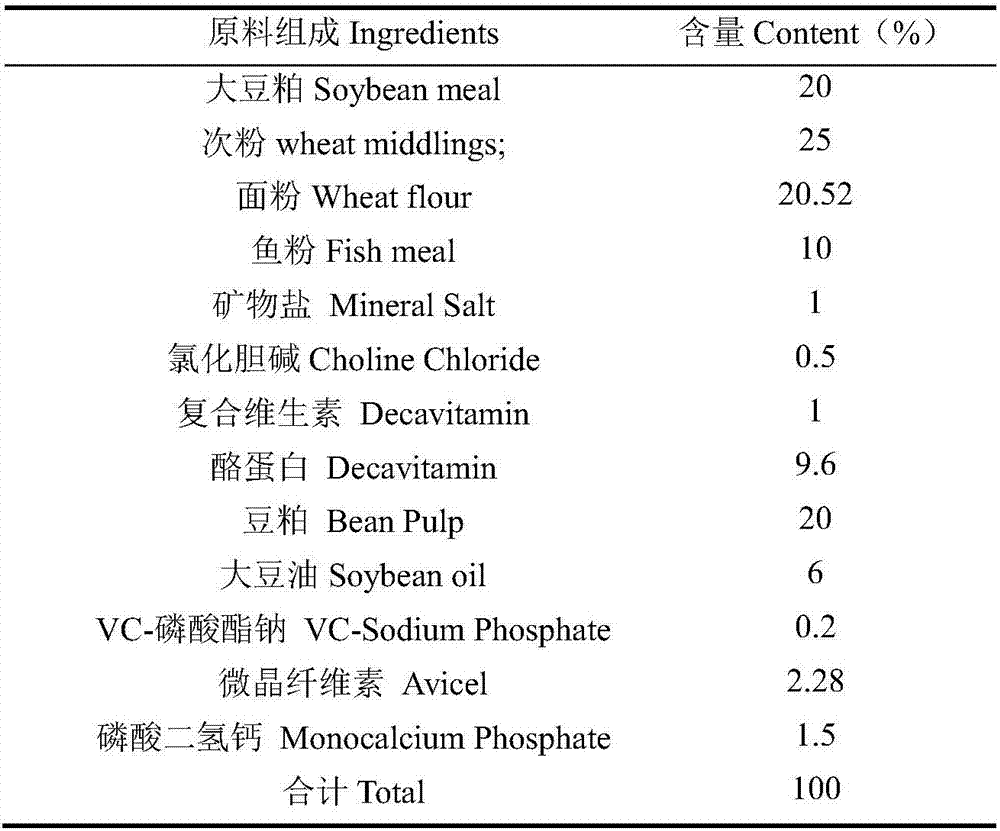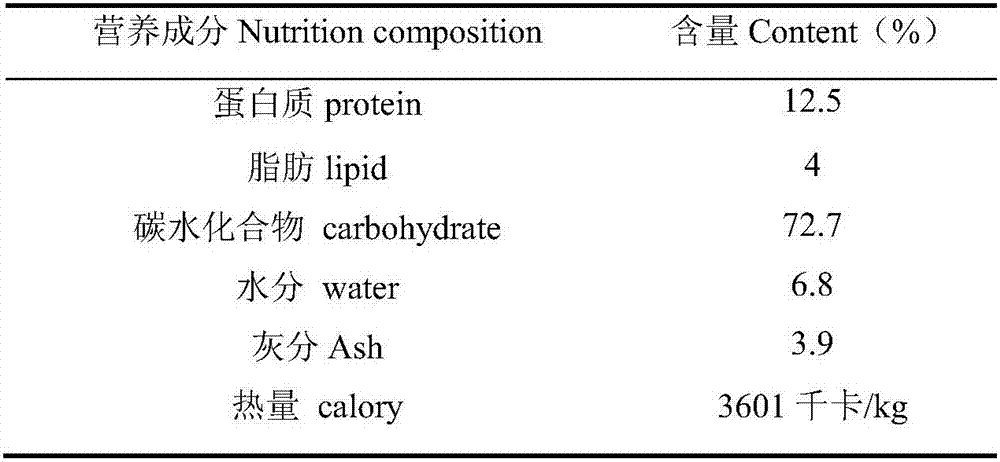Microelement selenium dietary supplement with function of regulating intestinal flora and application thereof
A technology for regulating intestinal flora and dietary supplements, applied in the application, function of food ingredients, food science and other directions, can solve the problems of high cost, reduce the shelf life of food, harsh requirements, etc., and achieve the improvement of relative abundance, increase Antioxidant capacity of the body, the effect of reducing relative abundance
- Summary
- Abstract
- Description
- Claims
- Application Information
AI Technical Summary
Problems solved by technology
Method used
Image
Examples
Embodiment 1
[0034] Embodiment 1: mouse feed preparation
[0035] Feed preparation method of the present invention such as figure 1 shown.
[0036] Sodium selenite is dissolved in deionized water, then mixed with the feed, and granulated. The detailed method is as follows: Weigh 0.15, 0.40, 1.00 and 2.00mg of sodium selenite respectively, dissolve in 200mL of deionized water, pour into 1kg of feed material, mix and granulate. The mouse feeds with selenium content of 0.15, 0.40, 1.00 and 2.00 mg / kg were formed, and named as control group, selenium-enriched group, high-selenium group and extremely high-selenium group respectively. They are equivalent to human intake of 50, 200, 400 and 800ug / d. The composition of the basic feed is shown in Table 1 and Table 2 below:
[0037] Table 1 Basic Feed Composition and Content
[0038]
[0039] Table 2 Basic Feed Composition and Nutrient Content
[0040]
Embodiment 2
[0041] Example 2: Effect of trace element selenium dietary supplement on intestinal flora of mice
[0042] Forty four-week-old SPF mice were randomly divided into 4 groups, 10 in each group. The groups were control group, selenium-enriched group, high-selenium group and extremely high-selenium group. Each group was fed with feeds containing 0.15, 0.40, 1.00 and 2.00 ppm selenium, respectively. The mice had free access to food and water, and the experimental period was 2 months. Feces from each mouse were collected at the end of the two months. Genomes from mouse feces were extracted using a Fecal DNA Extraction Kit (Omega Bio-tek, Norcross, GA, U.S.). And use PCR to amplify the V4V5 region in bacterial 16SrRNA. The amplification primers are 515F (5'-barcode-GTGCCAGCMGCCGCGG-3', the sequence shown in SEQ ID NO: 1), 907R (5'-CCGTCAATTCMTTTRAGTTT-3', the sequence shown in SEQ ID NO: 2). The amplification primers were purified by electrophoresis, and the purified products wer...
Embodiment 3
[0053] Example 3: Effects of trace element selenium dietary supplements on the antioxidant capacity of mice
[0054] According to the mouse experiment described in Example 1, after the end of the experiment, the mice were killed by taking blood from the orbit, and the liver and kidneys of the mice were taken, washed with pre-cooled physiological saline, and homogenized. Determination of antioxidant indicators such as SOD (superoxide dismutase), MDA (malondialdehyde) and T-AOC (total antioxidant capacity) in the liver. The test results are shown in the table below.
[0055] Table 5 Determination of antioxidant activity in mouse liver
[0056]
[0057] Note: * indicates that there is a significant difference between this group and the control group, p<0.05; ** indicates that there is a very significant difference between this group and the control group, p<0.01.
[0058] It can be seen from the data in Table 5 that the antioxidant capacity of the selenium-enriched group and...
PUM
 Login to View More
Login to View More Abstract
Description
Claims
Application Information
 Login to View More
Login to View More - R&D
- Intellectual Property
- Life Sciences
- Materials
- Tech Scout
- Unparalleled Data Quality
- Higher Quality Content
- 60% Fewer Hallucinations
Browse by: Latest US Patents, China's latest patents, Technical Efficacy Thesaurus, Application Domain, Technology Topic, Popular Technical Reports.
© 2025 PatSnap. All rights reserved.Legal|Privacy policy|Modern Slavery Act Transparency Statement|Sitemap|About US| Contact US: help@patsnap.com



